Gardeners want to know: Can I use pine needles in the garden?
The short answer—a resounding yes!
If you have pine trees on your property, or you live near a pine forest, pine needles will be everywhere. This gives you an abundant, free natural resource that can be used in many ways.
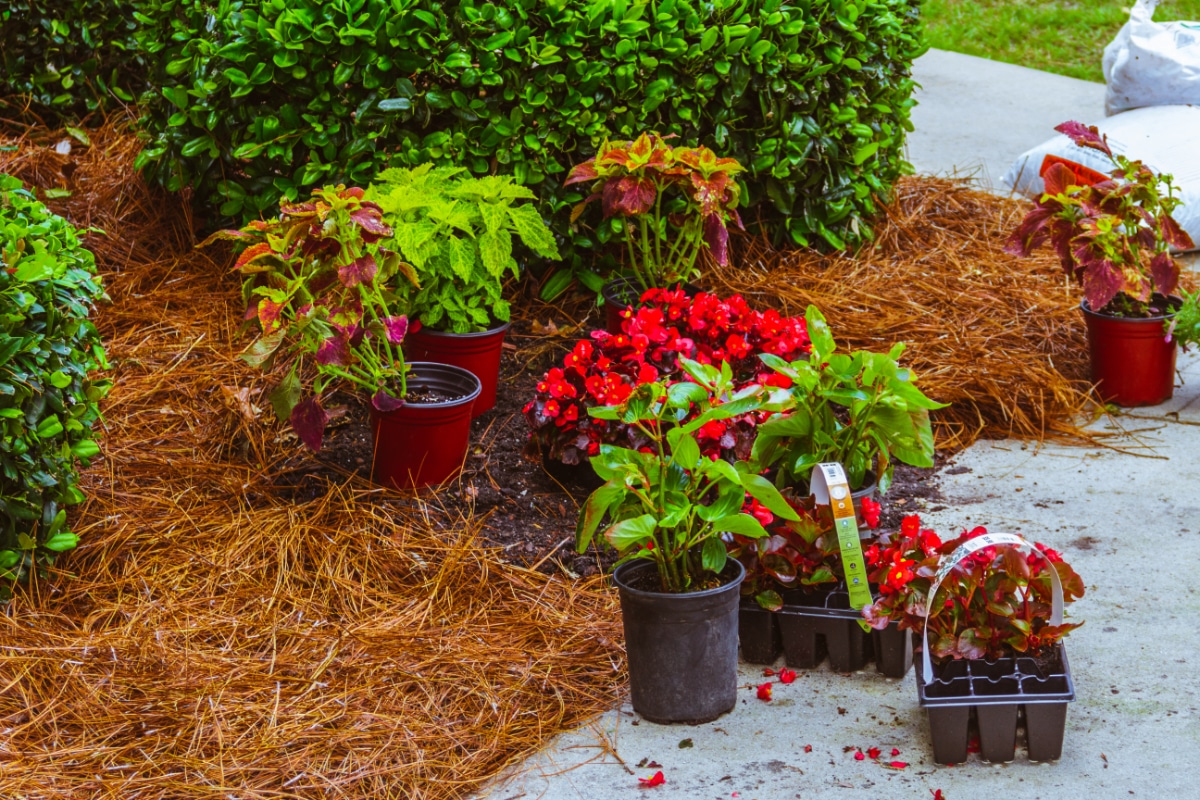
Jump to:
- The Benefits of Gardening with Pine Needles
- Aren’t Pine Needles Too Acidic to Use in the Garden?
- Using Pine Needles to Acidify Soil
- Pine Needles as Yard and Garden Mulch
- Use Pine Needles to Make Compost
- Pine Needles Make Great Garden Paths
- Line Garden Aisles with Pine Needles
- Protect Overwintering Crops with Pine Straw
- Pine Needles Are Excellent Erosion Control!
- Amending Soil with Pine Needles
- Pine Needles for No-Till Garden Methods
- Pine Straw for Repelling Problem Animals
- Repel Insects with Pine Needles
- Pine Needles Make Great Tinder and Fire Starters
- Pine Needle Fuel for Bee Smokers
- Make Naturally Antiseptic Cleaners with Pine Needles
- Use Pine Needles to Neutralize Strong Odors
- Soak and Soothe Garden Feet with Pine Needles
- A Few Final Tips When Using Pine Needles
In the garden, use pine needles to:
1. Acidify soil
2. Mulch almost anywhere
3. Make compost
4. Create garden paths
5. Line garden aisles
6. Protect overwintering crops
7. Control erosion
8. Amend soil
9. Build a no-till garden
10. Repel problem animals
11. Repel insects
12. Kindle a fire
13. Fuel bee smokers
14. Make naturally antiseptic cleaners
15. Neutralize strong odors
16. Soak garden feet
The Benefits of Gardening with Pine Needles
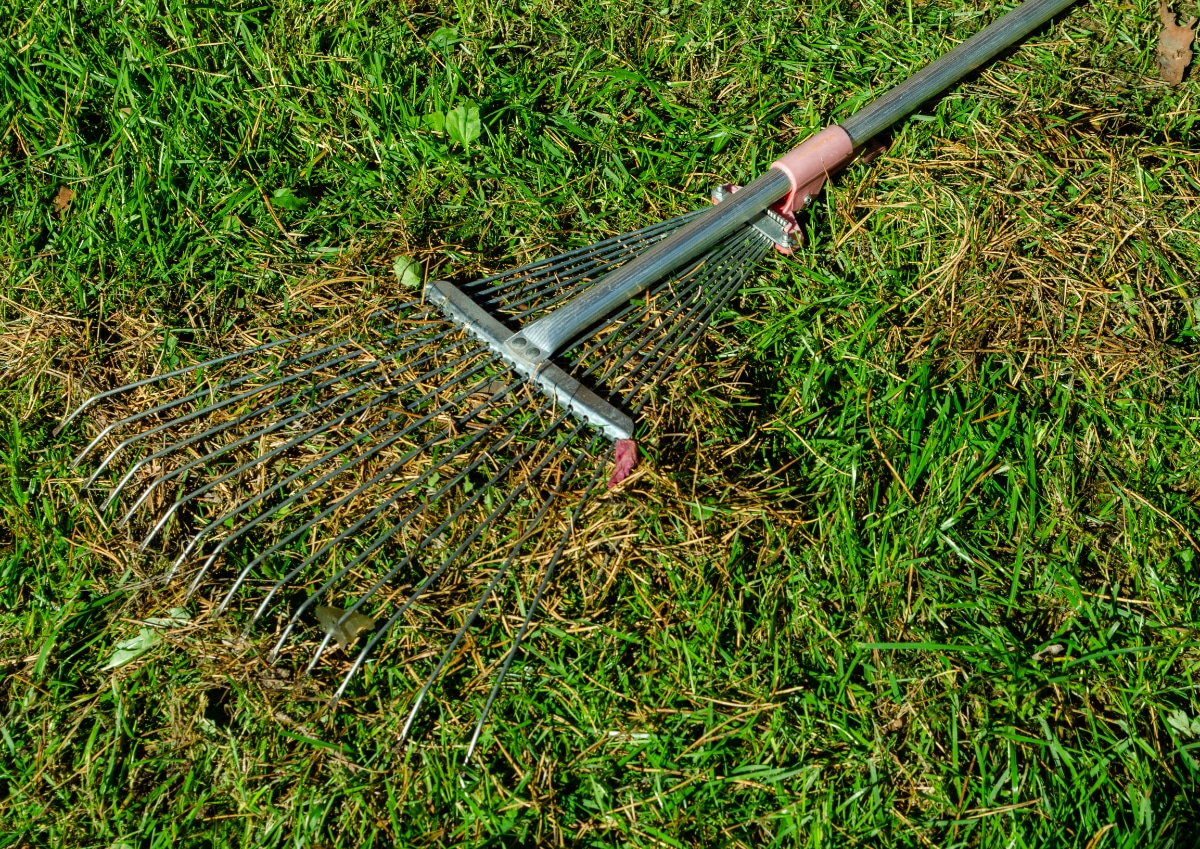
Pine needles (also called pine straw) are lightweight and therefore gardener-friendly—meaning they are lighter to lift, carry, and spread. A large bag of pine needles will weigh much less than a 50-pound bale of straw or a wheelbarrow full of wood chips or stone.
Pine needles are free. If you have a pine tree or trees on your property, you have an abundant resource. If not, do what many other gardeners do and find a quiet country road or forest trail lined with pine trees, then bag up what you need. Or, find a friend or neighbor with some pine trees and ask if you can bag up their refuse. Not too many people will say no to some free yard cleanup in exchange for free garden resources!
The needles of pine trees are a natural byproduct of the trees’ lifecycle and are therefore a renewable, but a harmless resource that requires no fuel or utilities in its creation. This cannot be said even for wood mulch and other byproducts like sawdust (both still useful, but not carbon-free in their production). Pine needles are a very safe, completely natural, and extremely eco-friendly garden material.
Pine trees are almost entirely seed-free. The only real seed you’ll find in them is something blown or mixed in, but comparatively speaking, pine needles contain no seed. Pine seeds come from pine cones but are only exposed when the cones are dry and open. If you remove or leave behind the pine cones, you aren’t likely to contend with too much pine seed.
Pine needles do not significantly compact in or out of soils, making them ideal for a number of uses. This also means that they will not make your soil harder or more compacting (quite the opposite, in fact).
Pine needles are long-lasting. They take a long time to break down, which means that they do not need replacing and replenishing as often as many other mulches and materials do. They are also free and easy to top up when the time does come for refreshing.
These many benefits put pine needles in line nicely for a variety of garden-related uses.
Aren’t Pine Needles Too Acidic to Use in the Garden?

This is probably the biggest myth associated with pine needles and gardening. People often think this because pine trees and evergreens thrive in acidic soils, and so people tend to think that the trees and their needles have made the soil this way. The truth is that the pine trees grow and thrive in these locations because the soils are already acidic, and that is where they were able to grow due to optimal soil conditions. It is not because the pine needles have made them so.
In fact, pine needles have a very limited impact on soil acidity, even though the needles themselves are quite acidic when they fall (somewhere in the range of 3.2 to 3.8 pH). Pine needles are very slow to decompose, so there is no big release of acid into the soil. As microbes decompose the needles, they render them very close to neutral; so close that experts say there is not enough lowering of soil pH to truly impact plants and they consider them quite “safe” to use, even if the plants in question are not notable acid-lovers.
Using Pine Needles to Acidify Soil
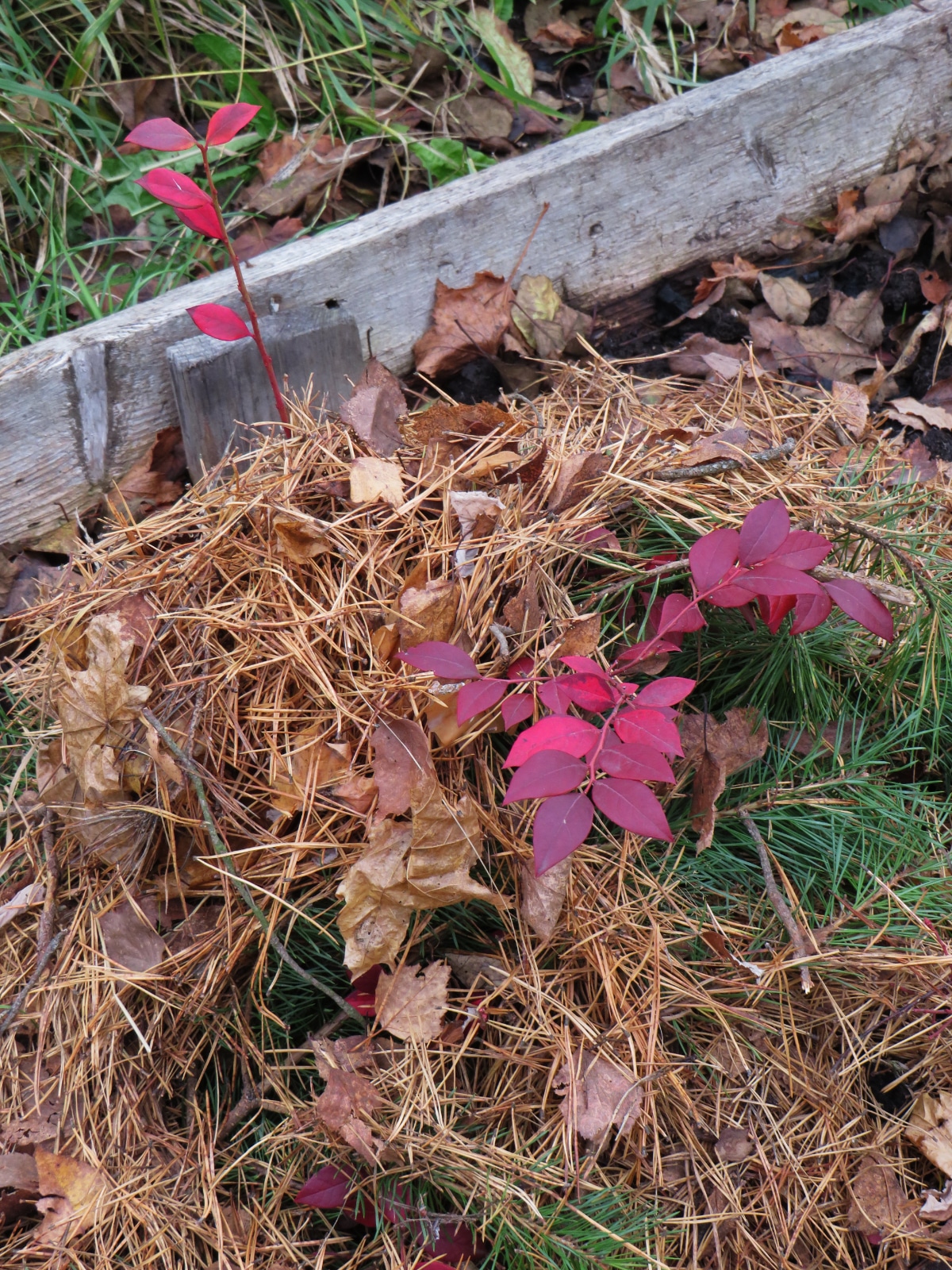
That said, the little acidity that they do shed is always a help to acid-loving plants like blueberries, rhododendron, and azaleas (among others), so they are of particularly good use under and around these shrubs. While the effects on soil acidity are moderate, they do still exist, so pine needles may be helpful in increasing the acidity of your soil. Just be aware that the impact will be more moderate than you might expect, and will be fleeting as the pine needles age. The effect will diminish with decomposition, so you will need to regularly reapply.
If you need to increase soil acidity to satisfy the needs of a particular acid-loving plant, it is probably best to use pine needles in combination with another known amendment. On its own, pine needles are not likely to achieve the desired effect. For instance, you might look to white vinegar for a more immediate effect, and a dressing of pine needles to release more acidity over time. It would not hurt to also work a layer of pine needles several inches into the surrounding soil.
Also, note that pine needles are at their lowest pH (highest level of acidity) when they are fresh and green; so, if you are using pine needles to increase soil acidity, use the freshest, newest fallen, greenest pine needles you can find (or as close to it as you can get—by the time needles fall, they are already drying and dying). The greatest effect on soil pH (acid increase) will occur during the first month of breakdown and will steadily decrease thereafter. In order to maintain soil acidity with pine needles, you would need to reapply fresh needles about every four to six weeks. (Noting, however, that it is always wise to test the soil before taking measures to change its pH).
Pine Needles as Yard and Garden Mulch
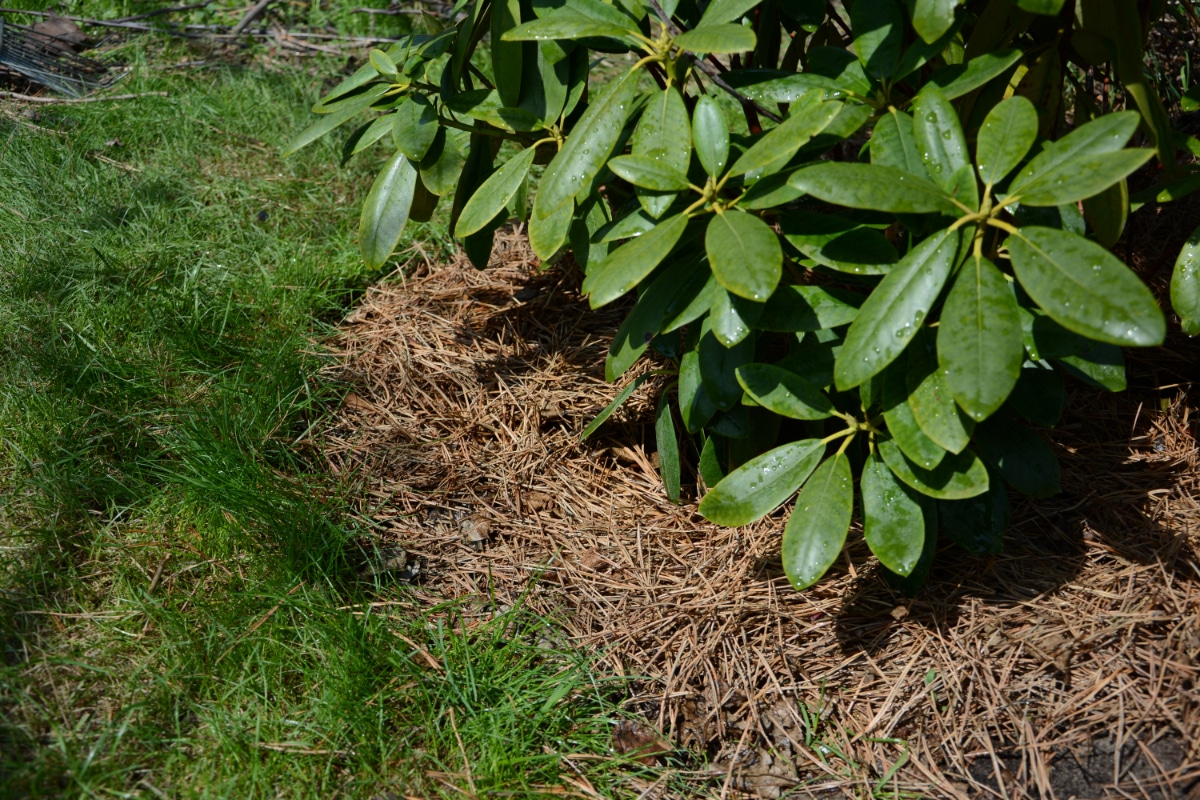
Pine needles are one of the longest-lasting mulches, preferred by many over the wood chips and other popular mulch materials. They are especially useful in areas where runoff and erosion are an issue.
As a mulch, pine needles are slow to decompose—so they last a long time—but they will also enrich the soil when they do eventually decompose. They block the light that is needed for weed seeds to germinate and grow, killing off weed sprouts. Pine needle mulch (also called pine straw) is quite effective in suppressing weeds.
As a seedless mulch material, pine straw is one of the least likely to grow weeds from the material itself. It is also excellent at moderating soil temperatures—keeping soils cooler in the heat of summer and warmer in the cold of winter. Pine needles form a loose but not impenetrable mat, so while they interlock and stay in place, they also allow essential air and water through and will not parch or smother plants, as long as they are not applied too thickly.
To mulch with pine needles, spread a layer of pine straw between three and four inches thick over the target area. Keep the straw back from the base of the plant, leaving about three inches of space surrounding the plant’s stem.
It is not advisable to layer your pine needles more than four inches thick. If you have more than four inches of pine straw, it will interlock so tightly that it will create a sort of shell over the ground’s surface and will then shed water instead of letting it filter through. The plants that you are trying to protect will have too hard a time accessing water if you lay your pine mulch too thickly.
Use Pine Needles to Make Compost

As a compost material, pine needles are a “brown” material—a carbon source. If you have a ready source, they are a good material to use to bulk up your bin.
Pine needles benefit compost piles because they do not compact and therefore, they provide good essential air and oxygen flow, which enhances microbial growth and action. They also provide needed carbohydrates. However, as they are not particularly moisture-absorbent, pine straw needs a good amount of green material and moisture to keep the balance and maintain the pile’s overall activity.
To use pine needles as a compost ingredient, it is recommended that you add them at a rate of about ten percent (10% of the overall percentage of the pile). An example breakdown might be: one part pine needles, four parts of other brown material(s) (such as sawdust, cardboard, or straw), and five parts green materials (examples are grass clippings, coffee grounds, vegetable or food waste, manure).
Pine straw is slow to decompose—slower than a lot of other brown materials. The needles have a natural waxy coating that protects them. It takes soil microbes longer to work through this coating. This should not deter you from using pine needles in your compost—they are too good and abundant a resource to ignore.
The needles will eventually break down, but if you want your compost to be ready sooner, try these tips:
- Chop the pine needles through a chipper or shredder.
- If you do not own a shredder or chipper, make a pile of the needles and run over them several times with your lawnmower.
- Keep a separate compost bin of pine needles to pre-age them and then turn them into your compost bin after they have had some time to decompose.
- Collect older, browner, more fragile needles that have already had time to break down.
- Use needles that have been used for mulch or elsewhere in the garden where they will have already begun to break down.
- Add the needles at the end of the garden season so that they have many months to break down before the compost is needed.
Pine Needles Make Great Garden Paths
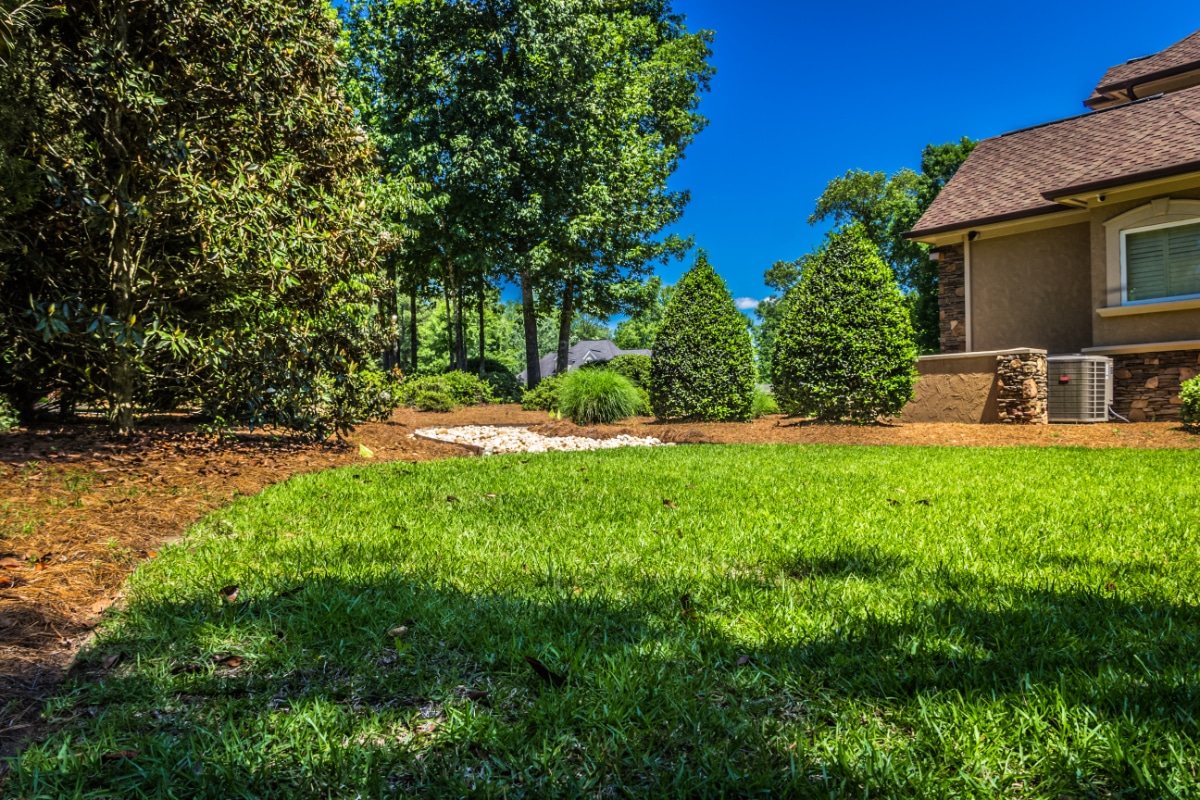
You know that feeling of walking on a soft forest floor covered in pine straw, absent of plants and weeds? You can recreate that experience in your garden—pine needles are an excellent material for creating garden paths and walkways.
Pine needles are slow to break down, comfortable to walk on, good at suppressing weeds, and best of all—they’re free! They are also easy to top up each year to keep your garden paths clean and clear.
To use pine straw to create a garden path, lay a layer of needles three or more inches thick. This should be adequate for weed suppression, though you may make the layer thicker. When mulching with pine straw, it is not recommended to use a layer more than four inches thick because the needles will make a shell that is impermeable to water and the plants will struggle to get adequate moisture. However, this is not a concern for a garden path—you don’t want plants to thrive there, and you don’t really want it to be wet.
So, for this use, an even thicker layer could be a benefit—you’ll keep your walk drier, you’ll deny water to weeds in your path, and the path will shed water to the sides and adjacent grass and plants.
Line Garden Aisles with Pine Needles

Similar to using pine straw to create paths and walkways, you can line the aisles between garden rows with pine needles to suppress weeds. Again, you may choose to make this layer thicker than your mulch layers but if you are concerned that that will keep your garden soil too dry, keep the layer to less than four inches thick. Layers less than four inches thick will still filter water down to the soil where it can find its way to your plants’ roots but will provide good weed suppression if between two and four inches deep.
Since pine needles are slow to decompose, you should have no trouble having the aisle liner last all season long. This will also help with erosion control on bare-soil aisles. And perhaps the best benefit of all—the needles can be tilled into the soil to enhance the structure and health of your soil at the end of the season, so there is no unnatural barrier to remove or to litter your yard and garden.
Protect Overwintering Crops with Pine Straw
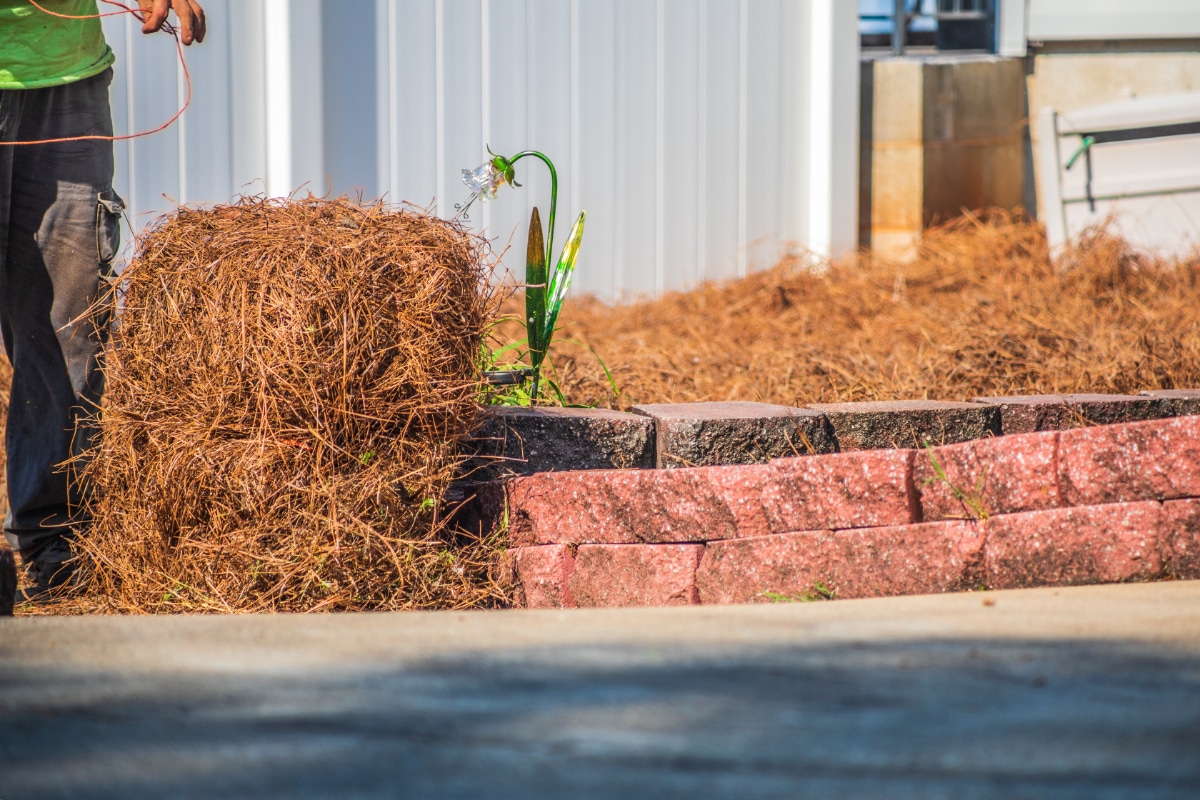
Pine needles are great to use for any of those plants that you mulch or bury to overwinter. A pile of pine needles will keep your plants warmer and protect them from frosts, hard freezes, and damaging weather like ice, sleet, and hail. They will also help moderate the temperature of the ground to help prevent roots from being heaved up out of the ground by penetrating frost.
To use pine needles for overwintering protection, lay a layer of needles several inches thick around the base of the plants to a diameter beyond the expected root area. To protect plants above the ground, mound a pile of needles several inches thick over as much of the stem or trunk as possible. For root crops, create a layer four or more inches thick over the entire row.
Be sure to remove or reduce any thickness over four inches early in the spring before the plants break dormancy so that adequate moisture can penetrate the soil. Remove piles of needles from above-ground portions after the coldest months have passed and before the plants break dormancy so that new leaf buds can get the light they need and so you do not rot or smother the plant.
Pine Needles Are Excellent Erosion Control!
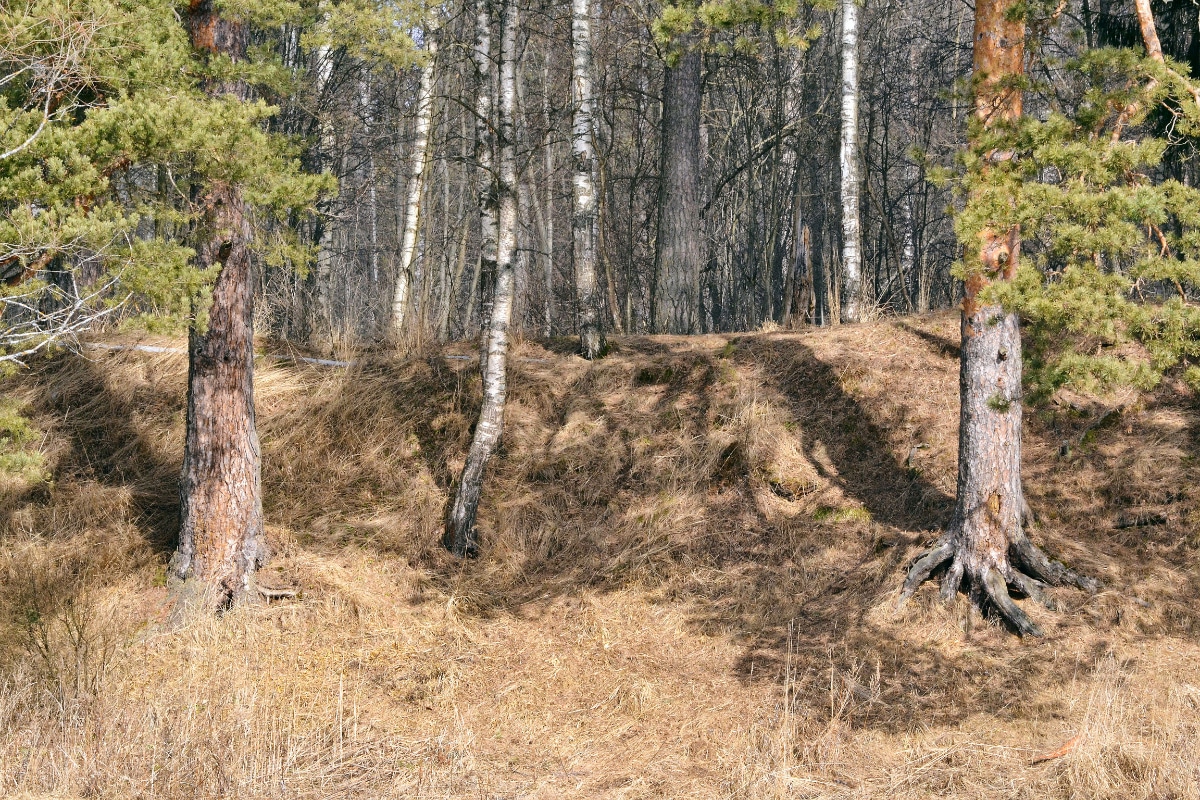
Pine needles make some of the best covers for erosion control. They are recommended anywhere where soil erosion and runoff may be an issue. They are recommended for erosion control on slopes and hillsides even over wood chip.
Pine straw is lightweight, but it naturally weaves and knits itself together so it does not easily blow or wash away. Once settled, pine needles do not float the way wood chips and other mulch products can. Lightweight and free, they are easier and affordable to work with, too.
Amending Soil with Pine Needles
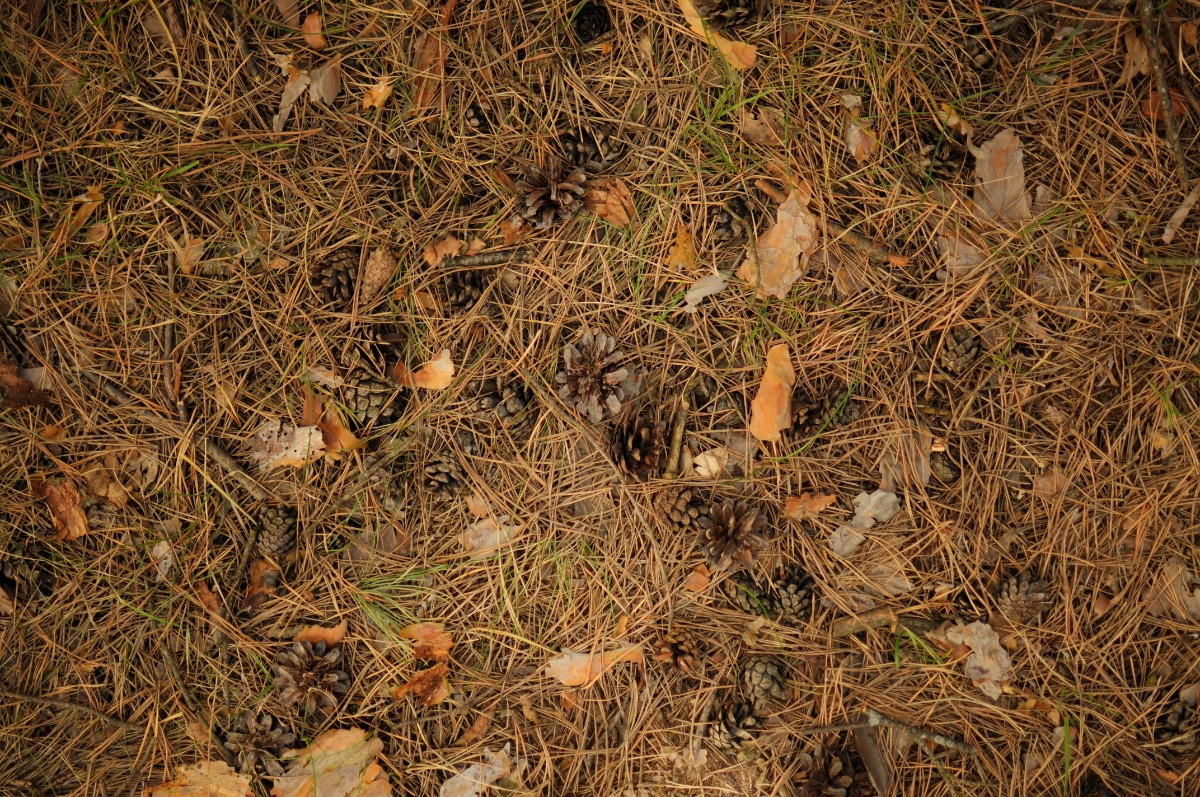
As mentioned, older pine needles have an almost neutral effect on soil pH, so they are good to use as a material for soil amendment. Their impact on soil acid levels is less than that of peat moss, which can turn soils to the acidic side without careful use. This makes pine needles a more neutral amendment for lightening the structure of soils as well as one that is much more ecologically sound (there is much controversy surrounding the true ecological impacts of harvesting peat moss from bogs).
Though in the end there is some nutrient benefit to decomposed pine needles, as a soil amendment they should be considered more of a structural amendment and not as a source of significant fertilizer. They improve soil tilth by making it lighter and more workable and increasing drainage and aeration. Pine needles are not particularly absorbent, so they should not be looked to as a way to improve soil water retention (except in the case of mulch which prevents moisture loss through evaporation).
To use pine needles as soil amendment, apply as compost (recommended) or cover the garden area in a layer of pine straw and then work it into the soil with a rake, hoe, or garden tiller. Repeat this until you have achieved your desired result. Be sure to work the needles into the soil well so that they do not clump and knit to form an impermeable layer inside the soil. As long as the pine straw is well distributed and evenly worked in this will not be an issue.
Pine Needles for No-Till Garden Methods
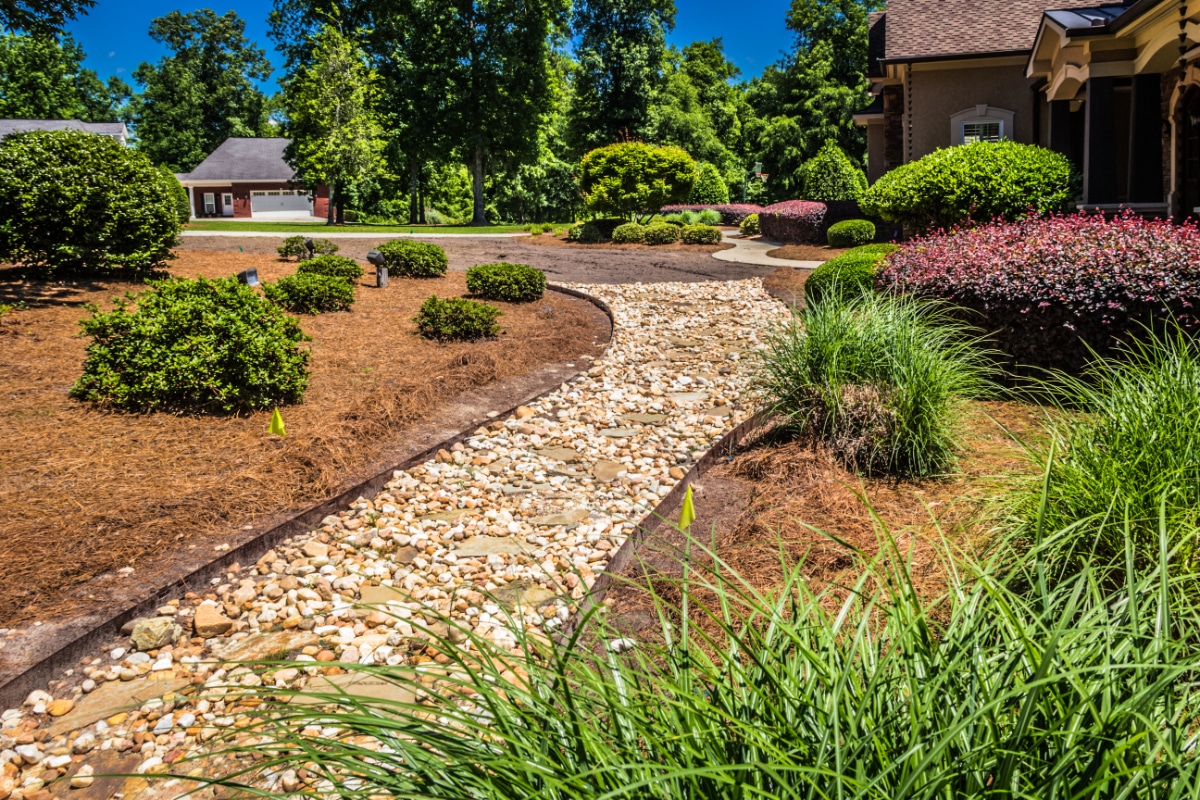
No-till gardening methods are becoming more and more popular. They save work, conserve soil, improve soil, and solve soil issues for gardeners who do not have good garden soil to work with. There are a number of forms that no-till garden methods take, including the popular “lasagna” or layered gardening methods.
Regardless of which of these methods you prefer, if you’re no-till gardening you should find yourself a source of pine needles. These easy-to-use, lightweight, free natural resources are ideal for no-till garden methods of any type.
To use pine straw for lasagna or no-till gardening, use them as your “brown” layer or carbohydrate layer, alternating with a layer of “green” material. Do not make a single layer more than four inches thick because you need water to be able to filter through it.
Pine Straw for Repelling Problem Animals
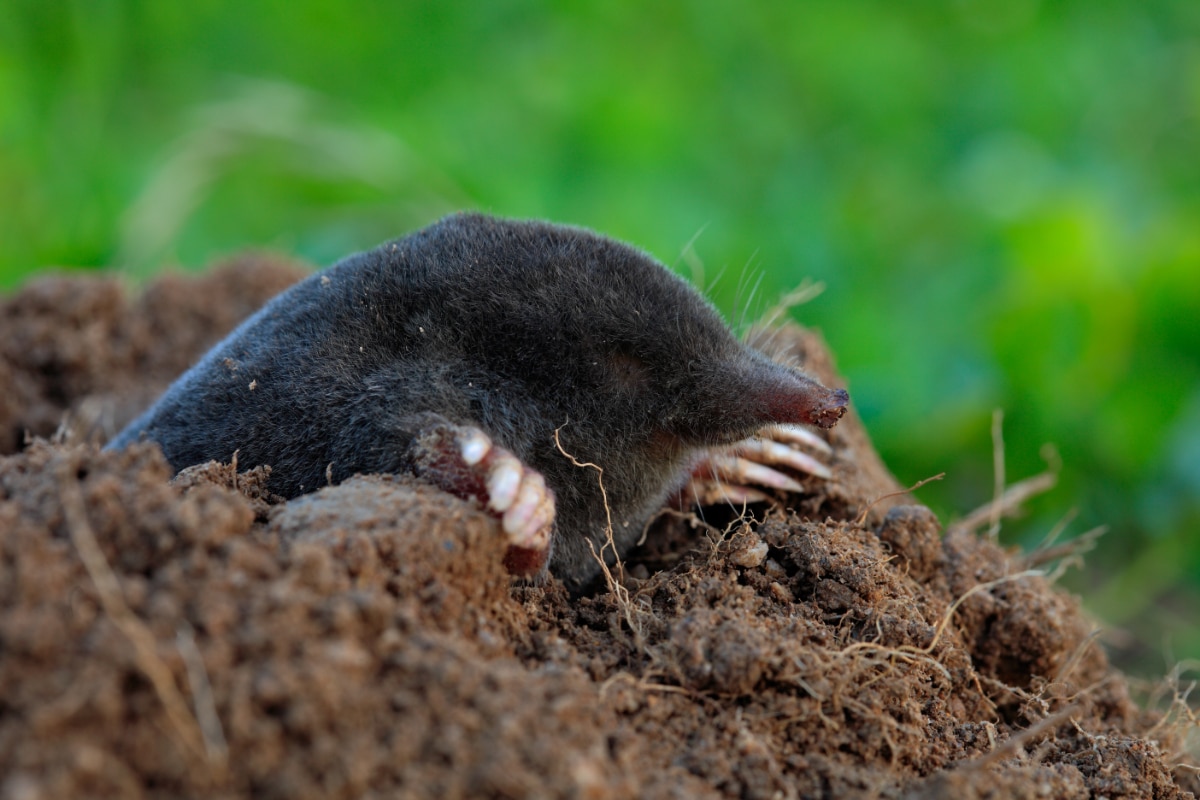
Many animals do not like the smell of pine and will avoid it when they can. This is true of cats, dogs, moles, voles, and other creatures that can be a nuisance in the garden.
If you are using pine needles for mulching or lining garden paths and walkways, you are probably doing a lot to keep these animals out of your garden by default. If you are not, you might want to think about changing out your mulch, or adding to it, for this purpose alone.
For problem animal control, line the garden perimeter with a two-inch layer of needles. You can also target specific problem areas or plants by spreading a layer of pine needles over or around the ground (as always, not more than four inches thick for the sake of irrigation).
The real repellant in pine needles is their smell, so once the scent is gone, you will need to refresh it with new pine needles to keep problem animals away. Spread a light layer of new needles (as fresh as you can get) over the top of perimeter linings, mulch layers, and in garden walkways for continued protection.
Spreading a layer of pine needles over your garden bed at the end of the growing season is especially helpful and will help keep animals from moving in over winter. You may not be overly concerned with what is living in your garden when you’re not using it, but it is far easier to keep problem animals out than it is to try to eradicate or relocate them during the growing season.
Repel Insects with Pine Needles
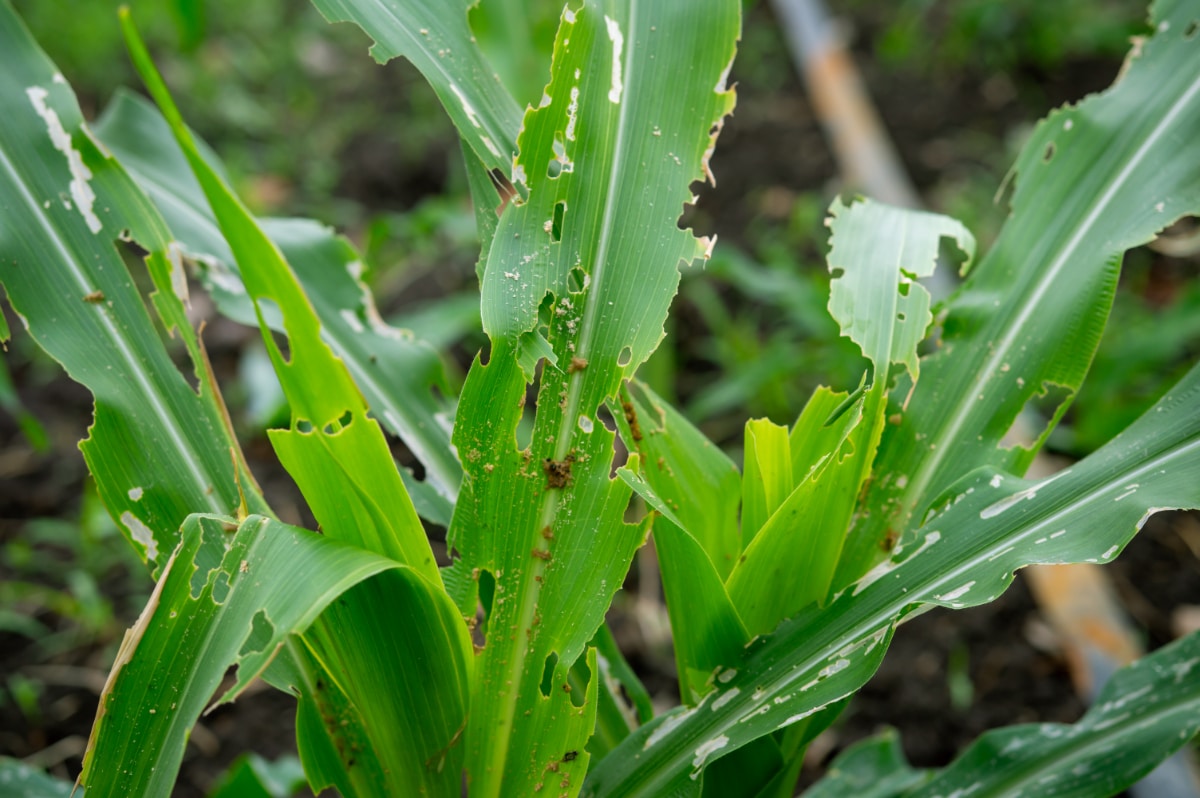
Most insects do not care for the smell of pine and so pine needles can be used to repel problem bugs and pests, too.
For widespread repelling, spread a layer of pine straw all over the ground throughout your garden, targeting areas where insect pests are especially a problem. Refresh the layer when the scent is weak.
You can also make a repellant spray by steeping pine needles in boiling water overnight and then using this tea as a spray in target areas. To make a pine-scented bug repellant, break up one-quarter cup of pine needles and add them to the bottom of a heat-proof jar (a one-quart mason jar or canning jar works well). Boil four cups of water, then pour it over the pine needles. Let the mixture sit overnight. The next day, strain the needles out of the tea. Pour into a clean spray bottle. Use this as a spray around the garden and garden seating areas to deter bugs.
The “smudge” method of insect-repelling can also be used to control biting insects and pests. Burn a handful of dried pine needles in clay or fire-proof pot. Place the pot or pots in sitting areas or near the garden (safely!) when working to control bothersome bugs.
Pine Needles Make Great Tinder and Fire Starters

A few handfuls of dry pine needles make an excellent tinder for starting backyard fires. Make a pile in the pit’s bottom, top with dry kindling, and light. Easy!
For something a little more lasting, you can make your own pine needle fire starters:
You will need paper muffin cups/wrappers*, paraffin wax, and pine needles.
- Cover your work surface with newspaper.
- Fill your muffin papers* with dry pine needles.
- Carefully and safely melt the wax according to package instructions. Wax is flammable, so do be cautious. It is recommended to use a double boiler and melt the wax slowly over low heat. Remove from heat when most of the bar is melted and let the remaining heat melt the wax the rest of the way. Take care not to splash the wax on your stovetop or on yourself, as it will burn you! You only need to melt the wax enough to make it pourable.
- Pour the melted wax over the pine-filled muffin cups. Fill the cups about one-half full. Leave some pine needles exposed to act as a wick to light your fire starters.
*A sturdier and free alternative to muffin cups is egg cartons, which also make good tinder and give a longer burn so kindling can catch. After you make the fire starters, you can rip or cut the egg cups into 12 individual fire starters.
Finally, whether you are using the needles to start your fire or not, throwing a handful or two is a nice way to add a pleasant scent to evenings spent in your garden, or sitting around your backyard fire pit. Don’t forget the added advantage of keeping those pesky bugs at bay!
Pine Needle Fuel for Bee Smokers
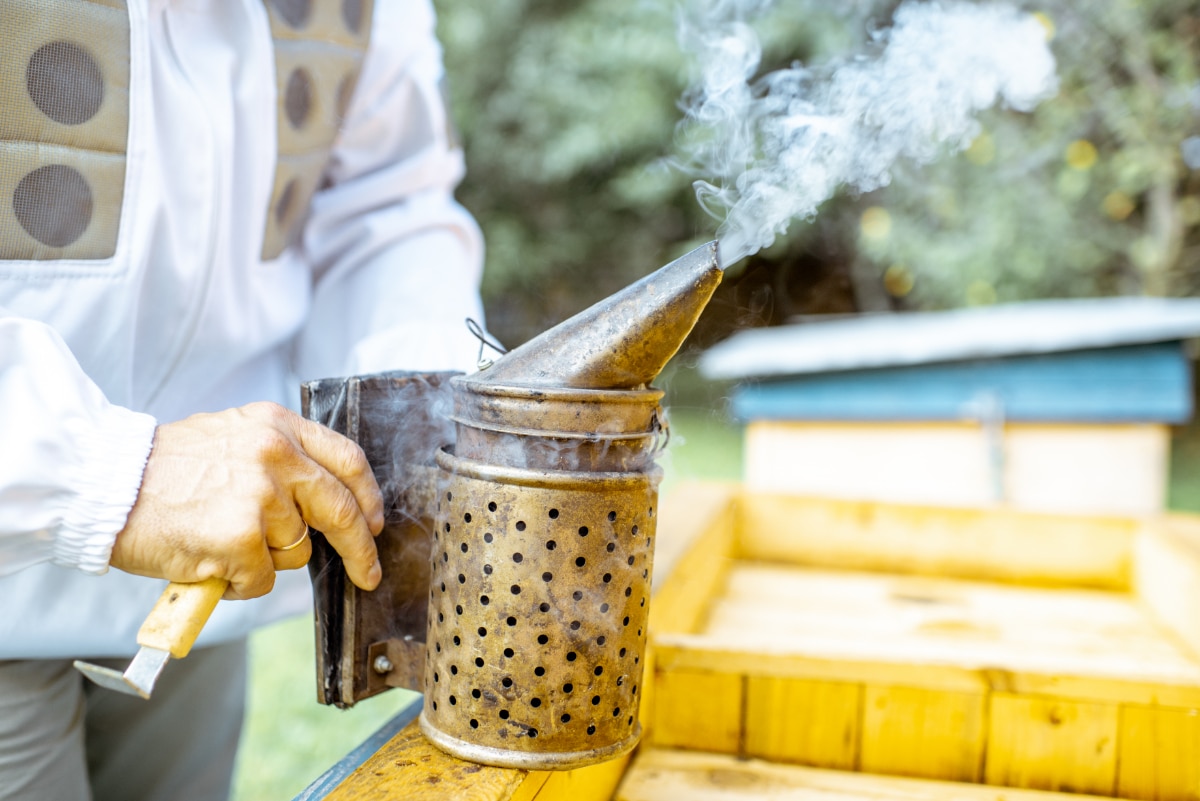
Do you keep honey bees?
A handful or two of pine needles is a good fuel for your smoker. Many beekeepers make a point of going around to pine-heavy areas and grabbing a bag or two of dropped needles for the season to fuel their honey bee smoker.
Make sure the needles are well dried, then simply fill your smoker (don’t pack it too tightly or the needles will not get enough air to burn), light, and enjoy your peek into your beehive! All-natural, free pine needles are preferable to press and glued smoker fuel pellets or anything that might come with questionable glues, chemicals, or dyes.
Make Naturally Antiseptic Cleaners with Pine Needles
Pine is a well-known cleaner that lends the added benefit of leaving behind a quite pleasant scent. What’s even better is that pine oils are naturally antiseptic, so not only will they help you to remove dirt and grime from all sorts of surfaces, they lend an antimicrobial hand, too.
You can make a simple pine needle cleaner using just pine straw and water, or you can kick it up a notch by using vinegar in your recipe (which will also increase its antifungal, antibacterial, and antimicrobial power).
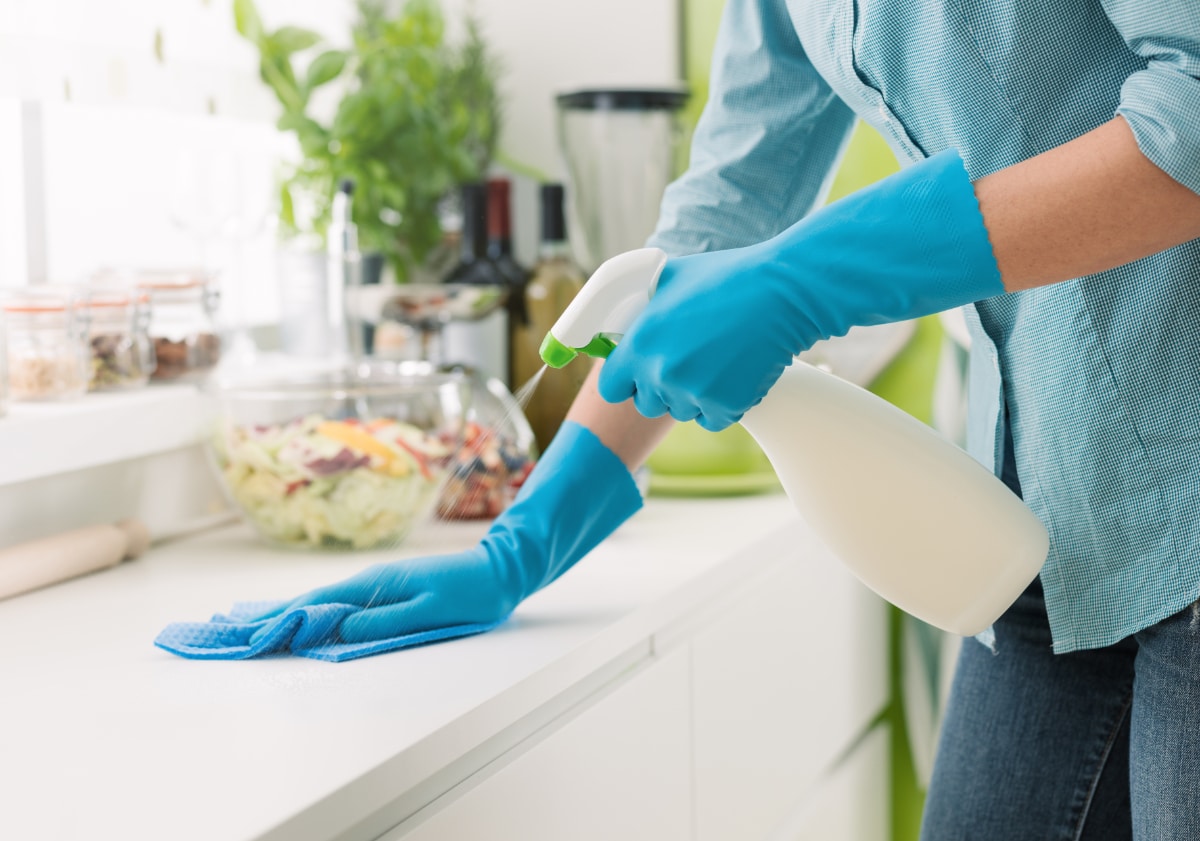
Pine Needle and Water Cleaner
- ½ cup broken pine needles
- 2 quarts water
Place the needles in a heat-safe bowl or jar, boil the water, and pour it over the pine needles. Let the mixture sit and steep for about three days, then strain. Use it as a scrub or a spray cleaner.
This recipe is a bit gentler than the following vinegar-based recipe, so is preferable for use on painted surfaces and surfaces like stone and pavers if you are concerned that the vinegar might cause discoloration or pitting.
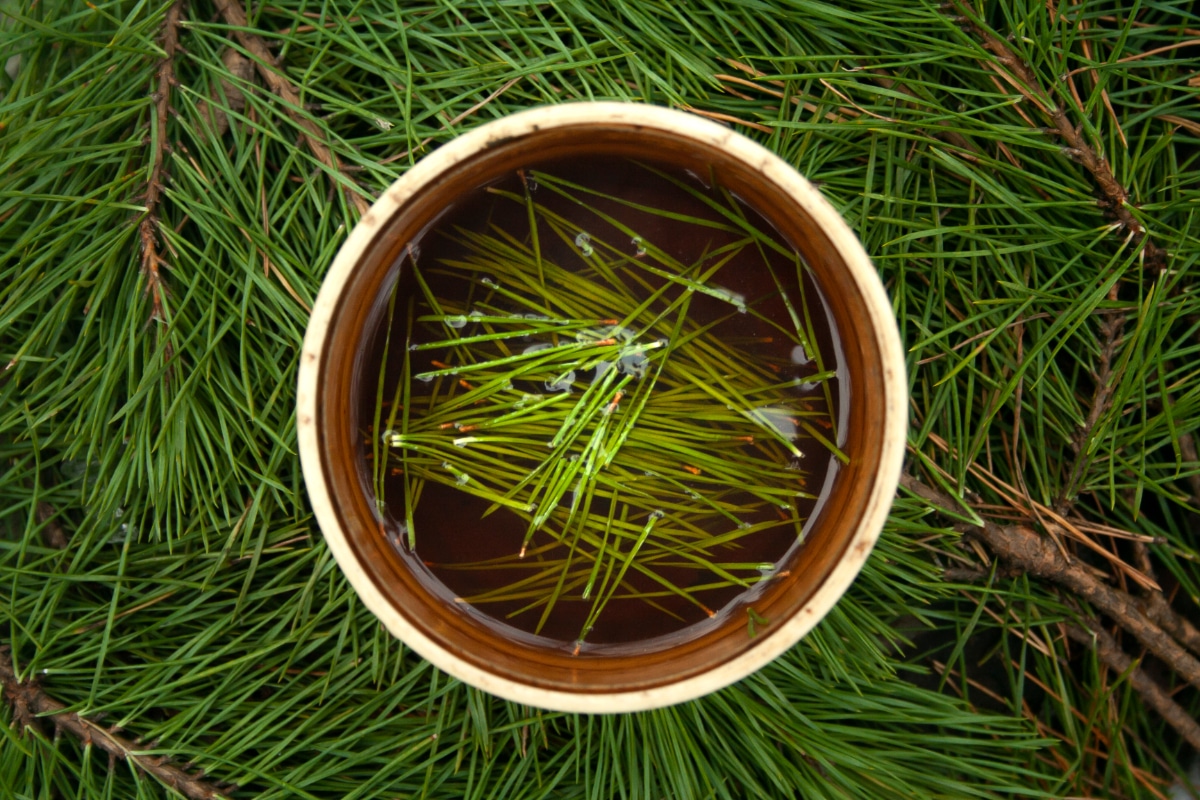
Pine Needle Vinegar Cleaner
• 1 cup pine needles
• 4 cups vinegar
Place the pine needles in a container and pour the vinegar over the needles. Cover and seal. Let steep for two weeks. Strain the needles from the vinegar and use the liquid as a wipe, scrub, or spray.
As with all types of cleaners, it is wise to spot-test a cleaner on a new material or surface before widespread use.
These cleaners are generally safe and effective when cleaning pots, garden tools, and outdoor furniture (many people even use them indoors on kitchen counters and surfaces). They effectively clean dirt and grime, soap scum, and residues.
Use Pine Needles to Neutralize Strong Odors
Pine is probably one of the most common deodorizers, for good reason—it’s a classic, clean scent that is highly effective at eliminating odors. A few pine needles are all you need to quickly erase strong scents left from harvesting and preserving. This comes in handy when harvesting or drying smellier produce like mushrooms, peppers, garlic, and onions!
Deodorizing with pine needles couldn’t be easier. Just place a handful of needles in the bottom of a pot, fill halfway with water, and bring the mix to a boil. You can simmer the needles on low once the water boils, or just turn off the heat and leave the open pot to infuse the air.
An added note—pine needles tied in a bit of cheesecloth or muslin make fast and fresh sachets that can be used in the home, around outdoor seating areas, or around the garden.
Soak and Soothe Garden Feet with Pine Needles
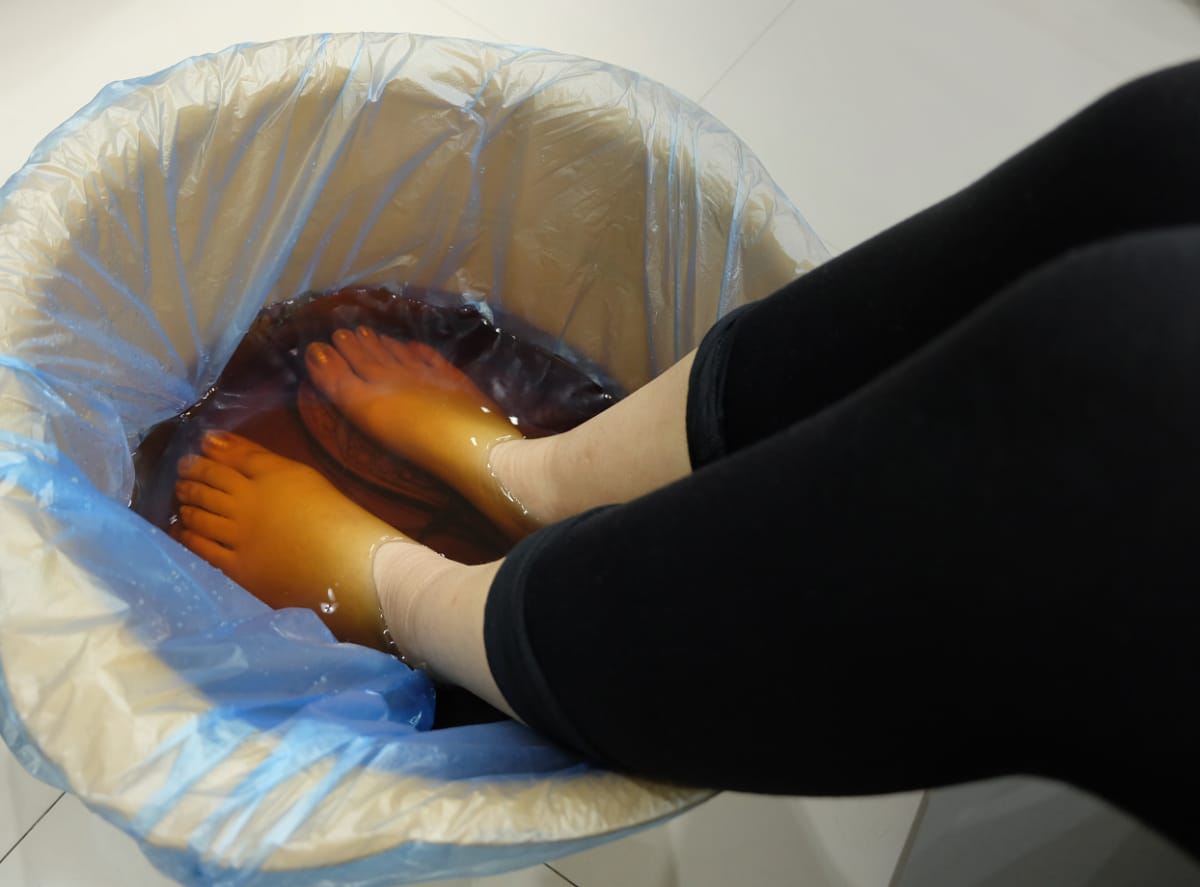
Not your plants’ feet—your feet!
When the day is done and your dogs are tired, soak those working feet in a soothing pine-scented footbath. You’ll benefit from the pleasant scent but also from the antiseptic properties of the pine needles as you clean and disinfect your tired feet (and maybe even help with athlete’s foot).
Use one cup of pine needles for one to two gallons of very warm (but not scalding) water. You can also add an optional ⅓ cup of Epsom salts for further treatment of sore, tired muscles and to reduce foot fatigue. Then just soak until you don’t feel like soaking anymore!
A Few Final Tips When Using Pine Needles
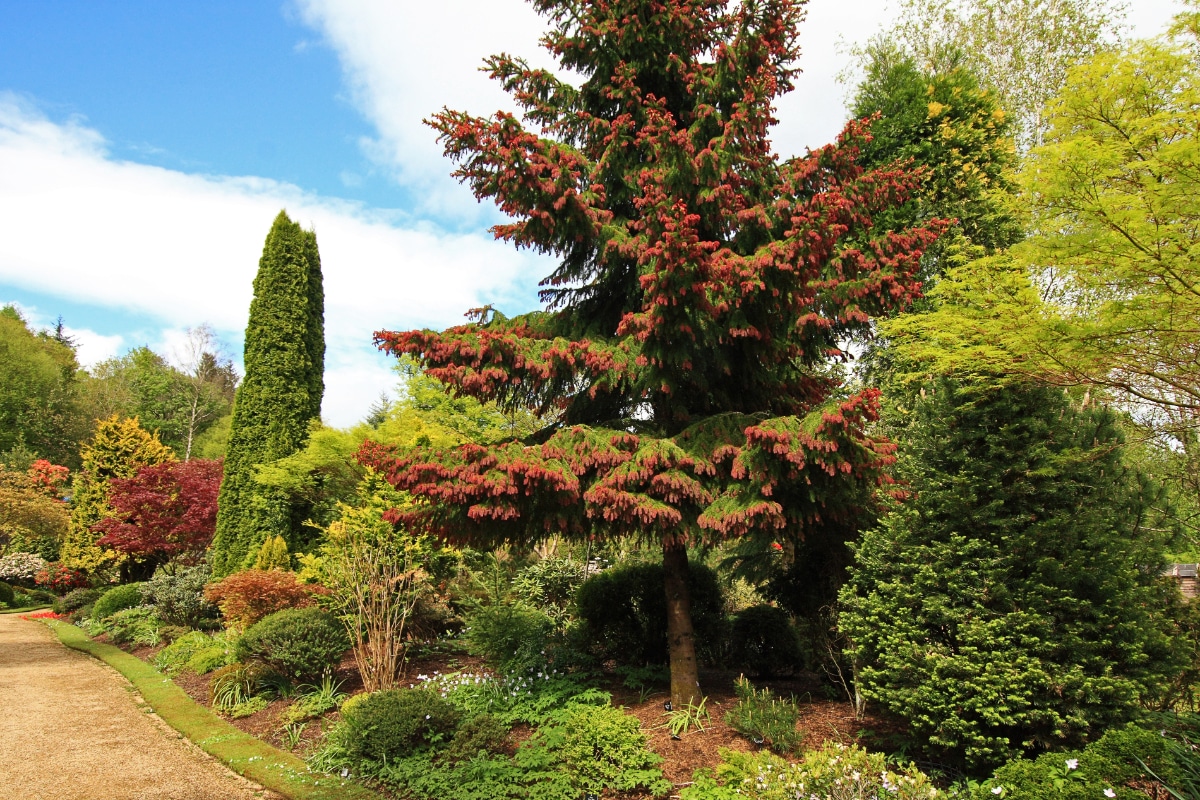
Pine needles are as natural as they come and overall, they’re pretty safe to use. That said, we must tell you to take care and caution with any of the uses that you are putting into action for the first time. Observe your plants and garden and take note of new potential problems that might be attributable to pine straw applications.
Aside from that precautionary tale, note that dry pine needles can present a fire hazard so take care if you live in a fire-prone area and/or regularly water pine paths and mulches to keep them moist. Since the target in the garden is a good level of livable moisture, this is less of an issue when pine needles are used for gardening purposes.
Though pine needles are known for knitting together and staying in place, newly laid needles may take a few days to settle so if the weather looks windy, a good soaking can help keep those needles where you want them until they are more firmly in place.
Other than that, the cautions are few but the benefits are many, so take advantage of this excellent free garden resource, brought to you by Mother Nature.

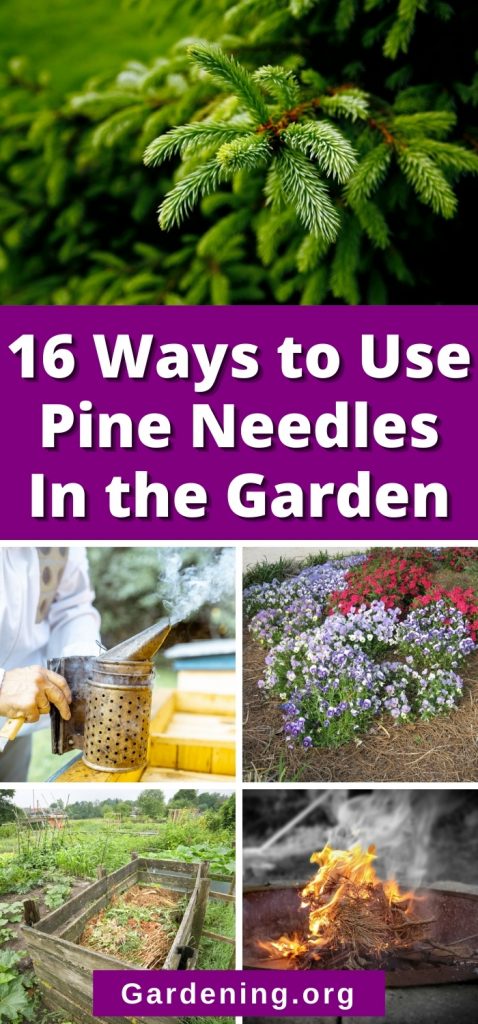





Suzanne Brown
Thank you for this excellent article!! I have SO many huge Pine trees and am delighted to know their needles are beneficial in my gardens!! I appreciate the information and advice.
Mary Ward
You're welcome! Thanks for reading!
Janice
Once pine needles die and fall from the tree, they are neutral and do not acidify the soil. They do make a very nice looking mulch. Now tell me what I'm going to do with all these cones!